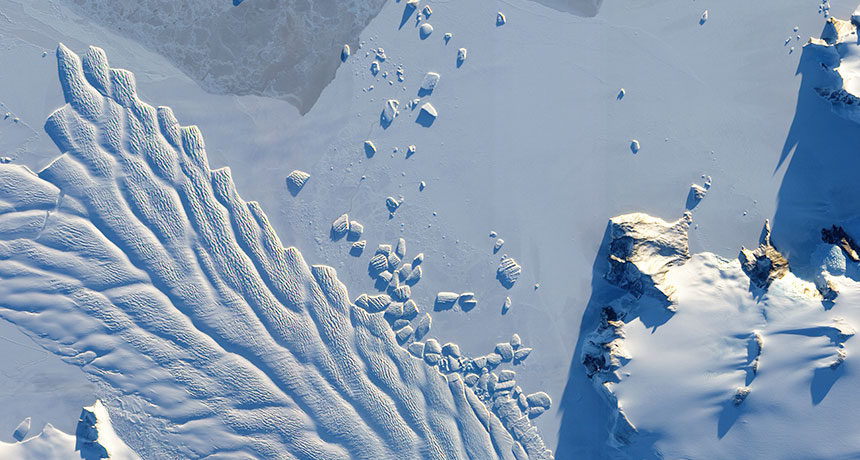
TIPPING POINT A new record of the Antarctic ice sheet’s formation suggests that carbon dioxide levels in the atmosphere could soon reach a tipping point that will make the ice sheet more vulnerable to melting. That includes ice in East Antarctica, such as Matusevich Glacier (shown).
NASA Goddard Space Flight Center
Assembling a detailed timeline surrounding the Antarctic ice sheet’s inception around 34 million years ago, scientists have identified a carbon dioxide “danger zone” for the ice sheet’s demise.